Heart's Work: The Intersection of an Arts Practice and Police Career
At home in his studio, Cloudcroft's new Chief of Police and polymath Roger Schoolcraft shares stories about his artisanal ceramics and basket weavings, policework, anger, hurt, and good karma
A small group of children, their parents, and silver-haired artists quietly shuffle around a display at Michael Nivison Public Library’s Tiny Art Exhibition.
One artwork in particular elicits gasps of admiration.
An immaculately woven pine needle basket shaped like a tree's knot or a hurricane's eye garners this reaction for two reasons: awe-inspiring technique and the fact that it was the artist’s first-ever submission to an exhibition.
The pine-needle masterpiece, awarded “Best in Show,” was patiently crafted by none other than Cloudcroft’s new Chief of Police, Roger Schoolcraft.
On a brisk September morning, Schoolcraft welcomed Cloudcroft Reader’s Hannah Dean into his home studio for an interview and to fire a few traditionally-made ceramics in his front yard.
The aroma of campfire contrasts the tiny-house community in Alamogordo where Roger Schoolcraft lives with his wife, Annie. Manicured lawns flank crisp, clean lots dotted by small angular homes.
Schoolcraft leans over and tends a modest flame in his brick-lined fire pit. A variety of his rustic pots, made from clay gathered throughout the Sacramento mountain area, warm up before he gently places them directly into the coals.
While the vessels begin their journey from earth to earthenware, Schoolcraft leads me across his xeriscaped yard into his cozy studio. Inside are perfectly organized shelves of family curios: fishing reels, photographs, and natural materials like feathers and deer sinew displayed in a salon-style manner. “Most of these fishing reels were my Grandfather's and were made before I was even born,” he says.
Only three months into his new gig as village Police Chief, Schoolcraft says he feels “well-received by the community,” a place with ties to his family history. “I fell in love with Cloudcroft when I was six years old,” he says.
He’s started his tenure as chief by collaborating with locals to emphasize the Cloudcroft spirit. Wendy at Tree Top Teez developed new patches with the nearby Mexican Canyon Trestle bridge embroidered with bright colors for the new outdoorsy tan and green uniforms. Matt at High Altitude helped Schoolcraft configure his new patrol unit: an electric mountain bike.
Back in his studio, comfortably dressed in a khaki fishing shirt, flip-flops, and a ball cap, Schoolcraft talks about the generations of fur trappers in his family. He hands me a handmade backpack, the base of which is woven from pine needles collected from the mountains, just like his clay.
We check on the pots and stoke the fire.
Schoolcraft talks about adding arroyo sand to clay for the right viscosity, to make it workable. He’s learned his craft from YouTube videos and the small community of artisans in New Mexico and Arizona who use historic vessel-making methods.
Excited to see how the colors of his pots change in the fire since he experimented with a new pigment, he says, “The Native Americans here, especially Mogollon, they use hematite, which is a natural stone that you can find out here as their black pigment. So I did the whole inside of this with that black hematite and the design.”
“I’m curious to see how it fires because I've never used it before. And this is another little test pot [he gestures to a three-inch plate on the edge of the embers.] And this is just some rough clay from the High Rolls area.”
As the morning progresses, directed by the timing of the handiwork in the fire before us, Schoolcraft shares about his career in law enforcement, the good and the bad, and how by creating work in his studio, he centers himself after traumatic work.
He opens up about his studio practice, the line of duty, cold cases, and the pain of losing his beloved friend Laura McCormick, who was shot last year while working in Weed, New Mexico.
The quotes that follow are Schoolcraft, in his own words. This interview has been lightly edited for length and clarity.
Where do you gather clay?
“You know where the skating rink is and the water's always piled up there. That always tells you there's good clay in the soil, or the water wouldn't hold. So I went over there and what I did is I levigated the clay. I broke it down, let it dry and then I crushed it up. It's a long process.”
“The color is what we've got. But what's weird is even though I might get the same clay source, the clay turns out different colors. I don't know if it's because I'm adding more of what I call temper, the sand temper in it, or it just sets different.”
“This is from 16 Springs Clay. And you get these fire clouds on the pots during the firing. And then, once you fire it, if you hear that noise [he taps on a finished pot], that means you've turned it into a ceramic product. It'll hold water, food, whatever. I could cook right now in it.”
How long does it take to make something, from start to finish?
“Three to four days. If I stay steady with it, I'll work it down. Some clay is easier to work with. Some I have to really grind on a metate there.”
“I use a grinding stone, render it down, then I screen all the big gravel and rocks and stuff out of it. Then, I figure out how much river sand I want to put in for temper. I'm kind of limited as far as how much, how big I can build the fire. The Native Americans made long firing pits. I may have to cheat [he pours lighter fluid over the dying flames.] See if we can get it going.”
Does your art-making relate to your police work?
“I don't know how they collide very well with one another. This is kind of my refuge, how I get centered again from work. Because I've been law enforcement, what, 34 years? Most of my career, I was in investigations, and unfortunately, I was involved in a lot of ugly. I saw lots of ugly. And so I think this has always been kind of my, not my escape, but my venue to clear my mind.”
“You know, a good thing about it is if I get aggravated (in my studio), I just put things down. I can go do something else because if you get aggravated with it, then you're whatever you're making doesn't have good karma.”
“We're trying to get up on the mountain, to be honest with you. We really want to move to Cloudcroft. But the prices are horrible right now. Yeah, we belong in the mountains. We always have loved the mountains. It's just where I'm centered, you know?”
“When I get on the new mountain bike, I can explore town. I can go down little areas I could never get to in a police unit and just see what's there.”
“I was a mountain deputy, too, before I took the chief's job. So I roamed all over these mountains for years, working for the sheriff's office. I did try to retire, honestly. I took three months off after I retired from the police department in Alamogordo, and it just didn't feel right.”
“I was doing a lot of things by myself, and it's not a lot of fun. You go fishing, you're by yourself. Everybody else is working. All your friends are working. Your wife's working. Kids and grandkids are already in school or doing something else.”
Cloudcroft Reader is proud to be sponsored in part by businesses like High Altitude, Cloudcroft’s favorite outdoors outfitter located on Burro Avenue.
Tell me about your career.
“So, I've been in law enforcement since I was 24 years old, and I took a 10-year break from law enforcement for a lot of reasons. I wanted to go and try to open up my own business. I did that, but my heart was always being a public servant, giving back to the community, and making a difference.”
“In law enforcement, I've worked every genre that you can possibly work. I started out in Los Alamos Police Department when I was 24 as a patrolman. Everybody starts out as a patrolman. You don't just jump into detectives. White Rock is my hometown, but Los Alamos is the big place close to that. And so I started there as a patrolman. But I was wanting more to do, you know.”
“It's a community like Cloudcroft, where at 9 or 10 o'clock at night, 99% of the people are at home in bed or watching TV. I was looking for more because I was young and more energized. So I ended up working for the District 1 Narcotics Task Force. I did some undercover work. I had long hair and an earring and a beard and all that. And we made some really significant strides during that time. Cocaine was really coming on really strong right there, and it was really hurting a lot of the younger people in our community.”
“So I started working a lot of undercover operations, kind of playing in the devil's playground. And we made some really significant buys and subsequent arrests for that. You wanna cut the head of the snake off. You make smaller buys to get to the bigger targets, and then you keep working your way up the food chain. Because drugs are ruining our country, they're ruining our country right now.”
“We've got fentanyl flooding over the border in mass amounts. We've got human trafficking and smuggling going on. And I'll jump right off of that to say we just were approved for a federal grant, it's called Operation Stonegarden, and it's an overtime grant that specifically puts us out in areas to help cut down on human smuggling and drug trafficking coming off of our southern border. A lot of the human traffickers are bringing people, they're circumventing the checkpoints. They're coming through the back part of the mountains, and they're coming right through the village.”
“Right there at 130 and 82, just as you come into the village, there were two little Jeep Patriots. That's 17 people and two drivers. So we had 19 people crammed into two tiny, small SUVs, packed in there like cordwood.”
How is the police department working in Cloudcroft?
“We're very fortunate we have a very low crime level in Cloudcroft, and I intend on keeping it that way.”
“They had asked me to run for sheriff. I had entertained that idea. But, my heart's in Cloudcroft, it really is. I can't see myself anywhere else. I need to finish my career there.”
“We've got the DARE program back in the schools, which is great. Probably one of the most worthwhile things I ever did was teaching the DARE program.”
“Basically just, the DARE program, in general, teaches children how to deal with peer pressure and how to say ‘no.’ It shows the consequences if you decide to start using drugs, alcohol, tobacco, or whatever. So that's a good program.”
“I've had several applicants put in for the police department in Cloudcroft. We want people who are invested in the community. I'm not going to just hire anyone to come work there. They may be short-lived. So I'm looking for people like us, like you. You love Cloudcroft. I love Cloudcroft. People that want to stay there, be a part of the community, safeguard the children.”
What do you prioritize in Cloudcroft?
“Number one, the children. Number two, fire and the safety of the community. I really love the people up there. They welcomed me with open arms. It's been really nice. I feel really blessed. I'm praying that we can find a home up there. I don't know, we need space.”
“I want the officers out on the street. I want them hanging out here. I'll go to the bakery. I'll have coffee and I'll visit with people. That's part of community policing. We need to be visible. We need to be approachable. But that's what we're going to do. It's just that simple. There was kind of a stigma from the past administrations about things not getting done.”
“We now do what I call ‘business checks.’ It's just a matter of walking in and saying, Hey, how's it going today? How's everybody? Because we don't want to be invisible.”
“Right now, we're going to stay with a four-person police department. I think we can manage the village quite well. All the coverage that we need with four officers, that includes me. I'm part of that four. I'm a working chief.”
“Chris Swanson has been really helpful. He's really stepped up. He's doing a lot of the administrative stuff, like ordering things. Obviously, we changed the uniforms because I didn't want to look like a SWAT cop. I did that for 15 years. I was a SWAT operator. I want us to be reflective of the mountain community, of the village. That's why I went to the green and the tan uniforms. That's why I got the mountain bike.”
“We started the Neighborhood Watch program. So I have five block captains right now. And I will name them because I'm very proud of them. We have Matt Willett. We have Matt Lochner, we have Kevin Foster, Mark Tarantino, and Nathan Tompkins from the coffee shop. So the reason for those five is because they're in different parts of the village. Their job as a block captain is to get with their neighbors and say, look, we're going to start watching over each other's property. One of the things in Cloudcroft is we don't have a lot of full-time residents there. We have a lot of part-time. So I was looking for people that are mostly full-time residents in the village to be block captains that are there all the time. They all volunteered.”
Recent stories on the Reader:
Discussion Items Strike out: October’s Contentious Council Meeting
The Evolution of High Rolls: From Railroad Town to Tourist Destination
What are some highlights from your career so far?
“One of the major things that I worked on for most of my career are cold homicide cases.”
“There was a specific cold homicide case I worked on. It was the Margie Pointer case from 1987. She was married to Jim Pointer, and she had a son named Michael Pointer. He was five years old, and she disappeared. That was in 1987. Flash forward to 2004, a foresting crew... a mile from town in Cloudcroft on the Sunspot Highway, found the partial remains of a female, which turned out to be her.”
“So I had picked that case up in 2005, and I started making a lot of things happen. I interviewed hundreds of people, witnesses, coworkers, and family. And I found the suspect.”
“I was reaching out to resident experts in forensics and DNA analysis, crime scene investigations. I'm never foolish enough to think that I can be the only source of solving a case. If you do that, you're going to end up on the short end of the case.”
“So I had a phone call from a national television show called Cold Justice. They brought a whole team of everything.”
“People from all over the country, attorneys, forensic experts. We made a TV series. That's how I got involved with John Walsh and America's Most Wanted. They found one guy, one of her friends, who lived with her when she disappeared. He was the one who reported her missing because her husband was overseas in the Air Force when she disappeared.”
“They found (the guy) living on a sailboat off the coast of Scotland. We were able to do a phone interview with him, gain some more critical information, found some more eyewitnesses.”
“The suspect was her supervisor. And there was word that they had been having a relationship with one another. We believe that they met for breakfast that morning. He took her up on the mountain. It was during the hunting season. And he showed up in a hunting camp later that day of her disappearance with big scratch marks on his face, like claw marks. One of his thumbs was busted. Like, you know, she was fighting, you know, if he strangled her.”
“I went to the U.S. Attorney's Office in Albuquerque, and they accepted the case. It's a long story; we were able to put the suspect on the Sunspot Highway on November 20th, 1984, in the same time frame that Pointer disappeared. After we did our presentation, the director of the medical investigator’s office changed her manner of death to homicide by violent action.”
“At that point, we went ahead and were getting ready to go to a federal grand jury to indict him for the murder of Margie. His name was Pete Mullins. He died from cancer. So I never got to put him in jail.”
Did you keep in touch with John Walsh?
“He helped me champion a couple of bills at the state legislature, because New Mexico is the only state in the Union that has a statute of limitations on second-degree murder.”
“It's only five years long. Every other state, it never stops. You catch them 20 years later, you charge them with first-degree murder.”
“When officer Clint Corvinus was killed, he was one of my guys. The man who killed him had been in and out of prison several times and had felony warrants out for his arrest. Why are these people still walking the street and harming and hurting and killing our children, our family members, you know? I don't get it. So that's my throw on that.”
“Let's go check the fire.”
You used the word “collide”—how do your career and your art-making collide?
“I really don't know how they ever collided. Ever since I was little, I've always been interested in woodsy stuff, hiking, and camping. Then as I got a little older, I wanted to refine my skills.”
Earlier, you said it centers you. You said you see a lot of ugly with what you do, career-wise.
“I will say this and kind of tell on myself. When I was a younger officer, working a lot of death cases and stuff, I was self-medicating a lot with alcohol and developed a problem with that. And, of course, that was a dead-end road, but being young and doing what I was doing and working so many cases, I kind of lost myself for a while.”
“And as I matured, I kind of started finding these things, which have been my venue to get away from the ugly. A lot of law enforcement officers say we struggle with PTSD. Maybe that's what you would call it. I would call it insomnia, being unable to sleep because we can't shut our minds off.”
“I kind of had some real problems recently after Laura (McCormick) was killed in Weed. She called me ‘dad.’ Her two sons called me ‘pop.’”
“We got called last year up to the Weed Store for what they thought was a stabbing victim. I was the first one on the scene, not knowing that she'd been shot. So when I get there, the dynamics of everything completely changed.”
“There's an ambulance there, the back doors are open. I go up, and there's Laura on a gurney, halfway to heaven already. My mind was trying to wrap around (the fact that) somebody I really cared about was dying, knowing that she has two young boys that she's raising, her and her husband, Carl.”
“It put me in a black place for a while. And so it kind of amplified what I was doing here, too, at the time. I had to come home and get away from that.”
“We caught the guy. His jury trial is coming up in a month or two.”
“Stuff like that imprints upon you and you don't go home and crawl in bed and just go to sleep. So I come out here (to my studio) and spend a lot of time. Annie gives me my space, and I'll work through my anger and my hurt through my art form.”
“Every time I make a pot, even though it's a little bitty one, I'm thinking about somebody when I make it, or I'm thinking about something, and I want it to have good karma when I gift it.”
“You know this as well as I do; the most valuable thing you can give anyone is your time.”
“Because you never get it back. So when I make something, and I gift it to someone, I'm giving them part of me, and I'm giving them my time. I want them to enjoy it. So, enough on that.”
We step back outside and remove Schoolcraft’s ceramic pots from the waning coals to let them slowly cool around the pit's edge.
The hematite patterns have turned a chalky white. Schoolcraft is excited to use the technique again and looks up with a soft smile, visibly pleased with an unexpected outcome.


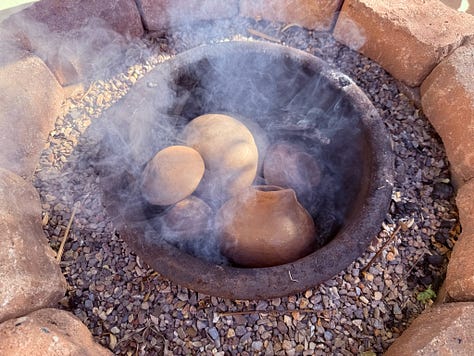

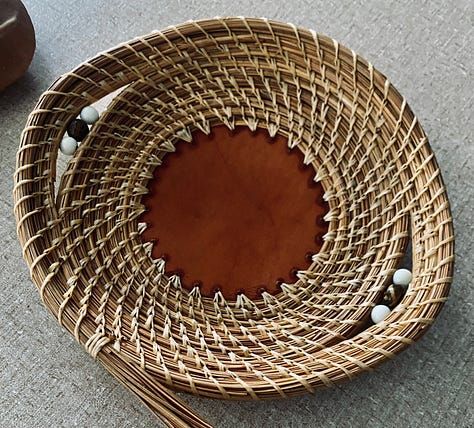

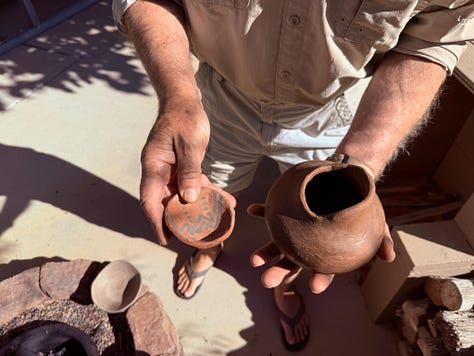

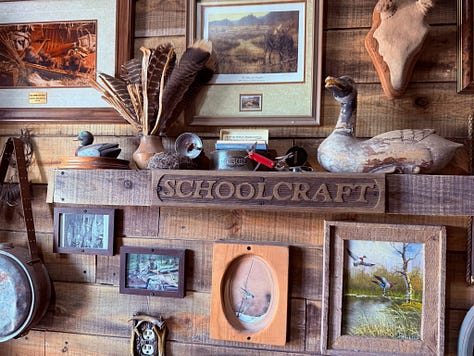
Cloudcroft Reader is proud to be sponsored in part by great businesses such as:
Cloudcroft Therapeutic Massage
Providing pain relief and injury recovery since 2003
575-415-4756
Medical Massage - Cloudcroft Therapeutic Massage
The reporting no one else does.
Become a Cloudcroft Star. Show us you like what we are doing. Your pledge of support helps us keep the Cloudcroft community informed on issues and people that matter.
Have a local business that cares about the health of Cloudcroft?
Learn about sponsorship opportunities for your business in support of the Reader. Contact us for more information at sponsor@cloudcroftreader.com







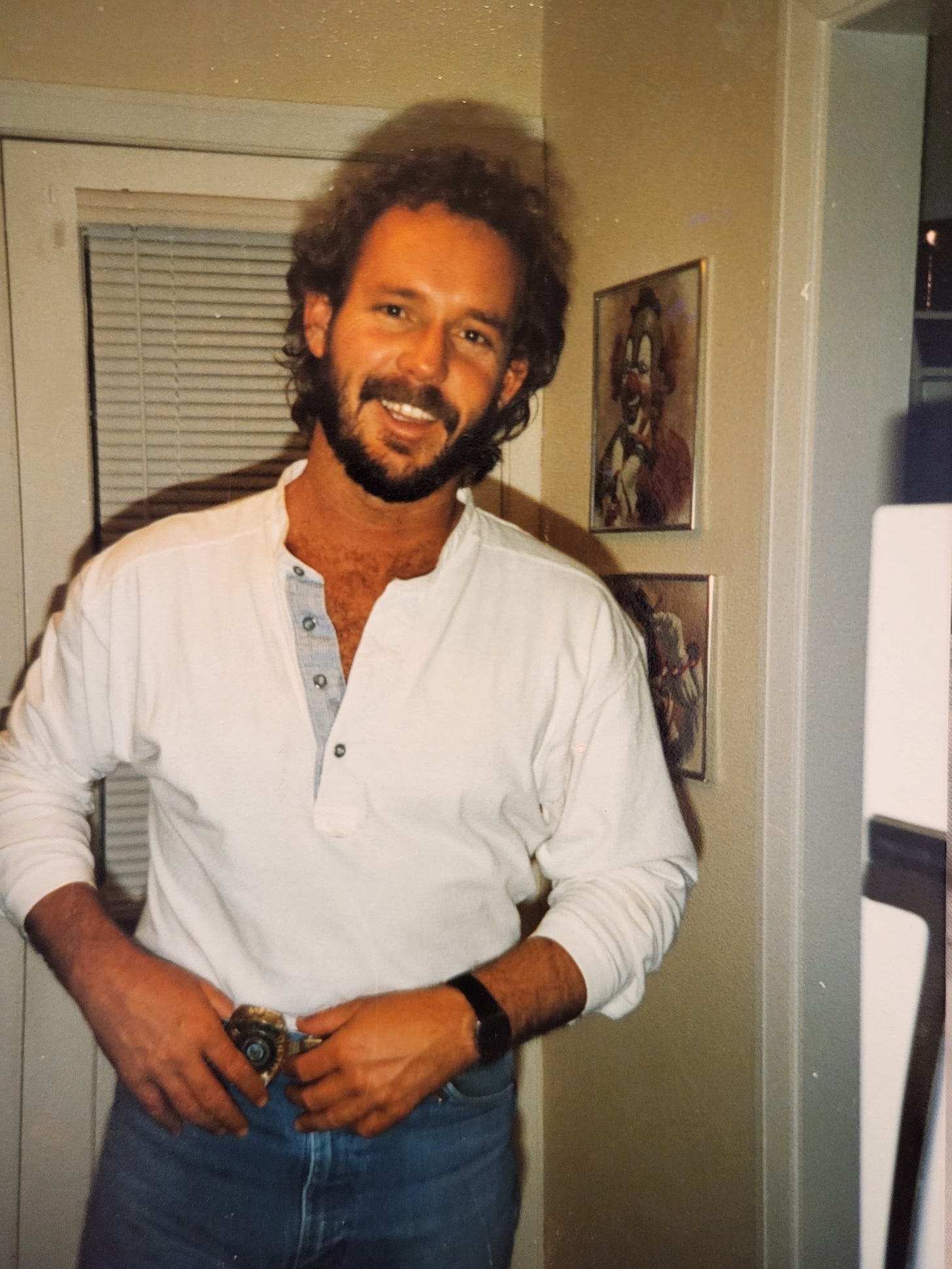
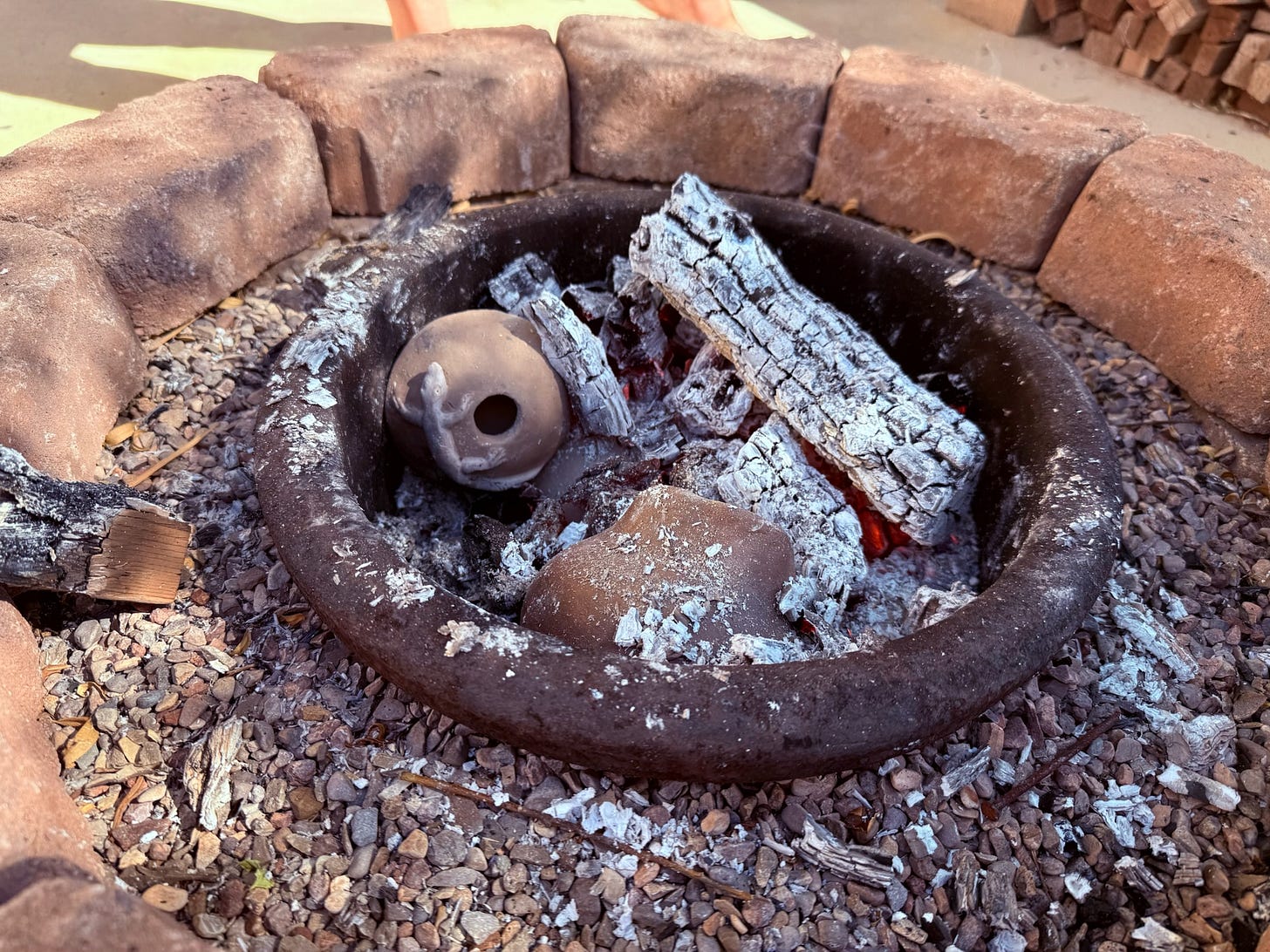

Hannah, what a great story on Officer Schoolcraft. I’m in Tucson now but in Kansas was a firefighter and have seen some no so good things. That article brought back some emotions and memories, good and bad! Thanks for the story!
What a great article! How interesting to actually "get to know" the chief on several levels. I have been a "summer citizen for the past 20+ years and love my time there. I am also an artist and truly enjoyed the insightful aspect of the chief in that area. Thanks again!